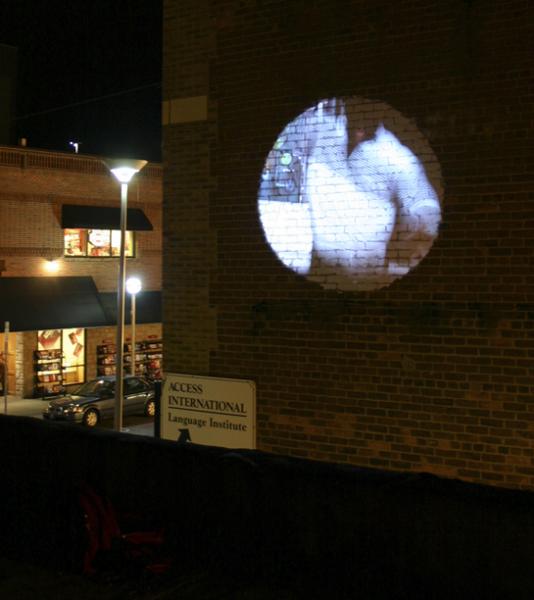Projection Screens
Any surface can be projected upon, but all surfaces reflect light differently depending upon their texture and color. For example, if you plan to bounce light off, or project images onto, a wall painted with white paint, the whiter the paint and the smoother the surface, the more reflective the wall will be and the brighter your image. A black wall will reflect no light at all. Black and dark tones can be used to minimize light reflection. For example, a black fabric or painted border around a screen minimizes the amount of reflected light that bounces off room surfaces back to the screen.
Screens made for projection have optical coatings that improve reflective properties. The image will be sharper, highlights will be more radiant and contrast and color saturation will be more intense than with the white wall. There are four categories of screen surfaces, from least to most reflective, they are: matte white (less than 5% reflectivity), pearlescent (15% reflectivity), silver (30% reflectivity) and glass bead (40% reflectivity).
See the book for information about gain and the viewing screen, and projection screen materials and formats, and for additional information about screen paint and site-specific projection.
Projection Screens and Reflectivity: Black Levels
Black levels refer to the darkest portions of your image. A completely black screen registers as zero luminance, while a completely white screen has 100 luminance. If a projection surface is too reflective, the blacks of the projected image will appear as light to middle gray. The screen’s surface (and therefore, its reflectance) should be chosen to offset and be compatible with the black levels of the projector. If the projector has high black levels, use a slightly gray screen to reduce the reflectance of the screen. The gray screen, which will appear white to our eyes, offsets the high black levels of the projector and provides a gain figure of .95 as opposed to the more conventional 1.3 to 1.5 gain figure for standard matte finish screens. In combination with high black level projectors, lower gain improves contrast and creates the appearance of a wider grayscale.
Using Screen Paint
All projection screens start out as a liquid that is applied to cloth or cured into a vinyl. Some manufacturers sell the liquid as screen paint, highly reflective acrylic paints designed for front and rear projection. Paints such as Screen Goo claim to offer exceptional color fidelity and excellent gain with minimal hot spotting. For front projection, the paint is meant to be applied to the smooth surfaces of materials like sheet rock, MDF or acrylic sheet. However, we found that even rough surfaces, such as brick, could be transformed into projection screens. For rear projection, any rigid transparent surface can become a dual-sided projection screen. $175 buys enough for two coats of base and topcoat to paint a typical home entertainment-size wall.
Determine the dimensions of the projection by placing the projector in the location and projecting a beam of light onto the wall. Connect the projector to the media source and project the image. Mark and tape off the area where you want the image or use the projection beam as a guide. The paint is recommended for clean, smooth surfaces, though can be experimented with on other types of materials. If the surface is dark-colored, apply a white primer first. Make sure you have enough screen paint. When using 500mL containers, both the Basecoat and the Topcoat cover up to 25 square feet, applying two thin coats of each.
Apply two thin coats of the base screen paint by rolling or spraying. The material is dense and dries quickly, so must be spread quickly. Apply two thin coats of the topcoat. Expect an hour drying time between coats. If using tape to mask the edges when painting, peel away tape before last layer is dry. Be aware that screen paint, while usually water soluble and washable, does not always wash off. Its permanence will depend upon the texture of the base material as the paint forms a particularly strong bond to rougher surfaces. Paint a test sample first to see if the paint, once dry, can be washed, peeled or scraped from the base material.
 Daniela Kostova, Billie Jean Performance, 2006. 7 foot screen made with screen paint.
Daniela Kostova, Billie Jean Performance, 2006. 7 foot screen made with screen paint.
